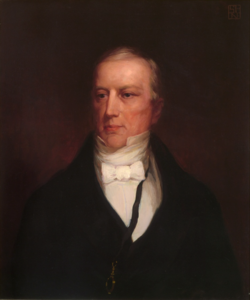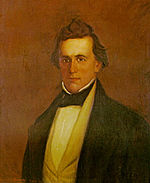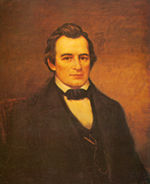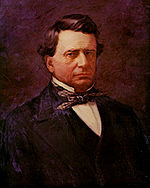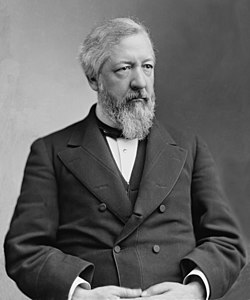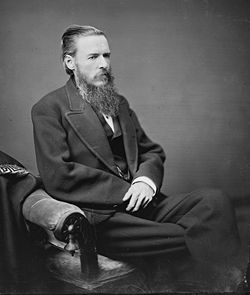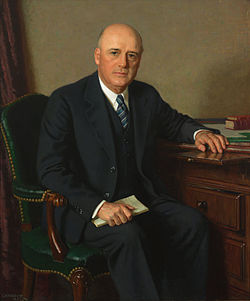Top Qs
Timeline
Chat
Perspective
List of speakers of the United States House of Representatives
From Wikipedia, the free encyclopedia
Remove ads
Remove ads
The speaker of the United States House of Representatives is the presiding officer of the United States House of Representatives. The office was established in 1789 by Article I, Section 2, of the U.S. Constitution. The speaker is the political and parliamentary leader of the House, and is simultaneously the body's presiding officer, the de facto leader of the body's majority party, and the institution's administrative head.[1] Speakers also perform various administrative and procedural functions, all in addition to representing their own congressional district. Given these several roles and responsibilities, the speaker usually does not personally preside over debates. That duty is instead delegated to members of the House from the majority party. Neither does the speaker regularly participate in floor debates. Additionally, the speaker is second in the presidential line of succession, after the vice president and ahead of the president pro tempore of the Senate.[2]
The House elects a new speaker by roll call vote when it first convenes after a general election for its two-year term, or when a speaker dies, resigns or is removed from the position intra-term. A majority of votes cast (as opposed to a majority of the full membership of the House) is necessary to elect a speaker.[1] If no candidate receives a majority vote, then the roll call is repeated until a speaker is elected.[3] The Constitution does not require the speaker to be an incumbent member of the House, although every speaker thus far has been.[4] Altogether, 56 individuals, from 24 states, have served as speaker of the House.
Remove ads
List of speakers
Summarize
Perspective
The House has elected a speaker 128 times since 1789:[3] at the start of each of the 118 congresses, plus on 10 occasions when a vacancy arose during a Congress via death, resignation, or motion to vacate. Of the 56 people who have served as speaker of the House over the past 236 years, 32 served multiple terms; seven of them served nonconsecutive terms: Frederick Muhlenberg, Henry Clay, John W. Taylor, Thomas Brackett Reed, Joseph W. Martin Jr., Sam Rayburn, and Nancy Pelosi. Altogether, there have been 65 occasions on which a new speaker took office. Every speaker of the House has been a member of a political party or faction; the number affiliated with each is:
- Democratic – 22;[a] Republican – 18; Democratic-Republican – 6;[b] Jacksonian – 3;[a] Whig – 3; Federalist – 2; Pro-Administration – 2;[c] National Republican – 1;[b] American – 1; Anti-Administration – 1.[c]
Remove ads
Speakers by time in office
Summarize
Perspective
The durations mentioned below are calculated based on date differences; if one were to count by the number of calendar days, all the values would be one day longer.
Additionally, since many speakers held office for multiple terms, often with non-consecutive periods, the time listed for each speaker represents the total length of their time as speaker. It is important to note that the period between the adjournment of one Congress and the convening of the next Congress is not included in the calculations. For instance, Nathaniel Macon served as speaker during both the 8th and 9th Congresses, but the eight-month gap between the two Congresses is not included in his service duration. The exact dates of service for each individual speaker is shown in the Term of service column of the above table.




Remove ads
Timeline

Notes
- During James K. Polk's tenure as Speaker, the Jacksonian bloc amalgamated into the modern Democratic Party.
- John Taylor served as speaker twice in the 1820s; initially he was as a member of the Democratic–Republican Party, and later, when the party began to fracture, he sided with its pro–Adams faction.
- The district listed is the district the speaker represented at the time they were in office, which may be different in different Congresses due to redistricting.
Remove ads
See also
- List of Speaker of the United States House of Representatives elections
- Party leaders in the United States House of Representatives
- History of the United States House of Representatives
- List of current presidents of legislatures, presiding officers of legislative assemblies worldwide
References
Further reading
External links
Wikiwand - on
Seamless Wikipedia browsing. On steroids.
Remove ads










